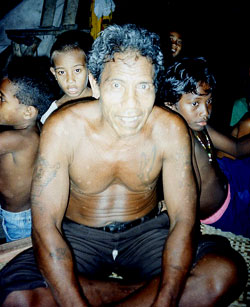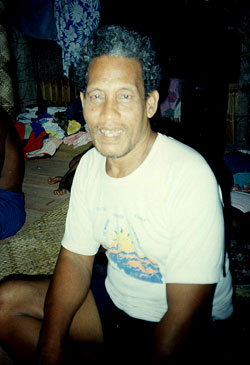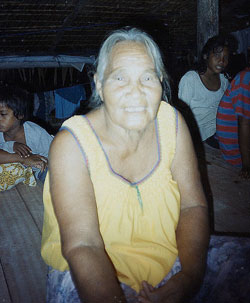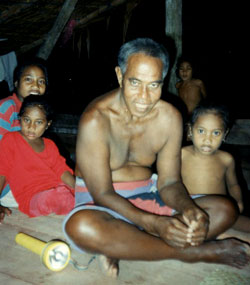 |
The International Group for Historic Aircraft Recovery |
|||||
 |
Solomons Islands Research Proposal
Background
TIGHAR has good reason to believe that Amelia Earhart died on Nikumaroro, at the place we call the Seven Site. There’s historical documentation that bones and artifacts were found in the area in 1940, and our three field seasons of archaeological work have yielded some very intriguing artifacts of American manufacture, dating from the 1930s. Some of these (notably the remains of a compact) suggest the presence of a non-local woman.
But from 1944 to 1946 there was a U.S. Coast Guard station less than a kilometer from the Seven Site, and after World War II the station was taken apart by the Kiribati colonists who lived on the island from 1939 until 1963. We’ve found artifacts at the Seven Site that almost certainly came from the Coast Guard station, and it looks like someone, at some point, started to build something on the site out of corrugated iron. We need to find out who did this, and what they were doing, so we can figure out whether they – rather than Earhart and/or Noonan – might have brought the 1930s American artifacts to the site. It’s unlikely that the Coast Guardsmen themselves (some of whom we’ve interviewed) built anything at the site, but it’s quite likely that the colonists did. We have looked for documents recording what was done at the site after the War, but thus far have had no success in the archives of the Western Pacific High Commission or the National Archives of Kiribati.
Besides clarifying what happened at the Seven Site, we would also like simply to document the history of the colony. It was, by some reckonings, the last expansion of the British Empire, and its people were true pioneers, braving an unknown environment much as their ancestors had when they spread out across the Pacific in their great sailing canoes.
The island was abandoned in 1963, and the former colonists relocated to a village they named Nikumaroro in the Solomon Islands, a long day’s boat trip across “the Slot” from Honiara, the capital. Many of them remain there to this day. Only they can tell us what life on Nikumaroro was like, or what they may have been doing at the Seven Site. It is even possible that someone in Nikumaroro Village will have information about the 1940 discovery of human bones. But people who remember life on Nikumaroro Island are getting old, and passing on without telling their stories.
 |
 |
 |
 |
 |
 |
 |
|
|
The Project
This project is designed to help document the colony’s history and shed further light on the Seven Site. We know the rough outlines of the colony’s history – it was established in 1939, it grew, seemed to become stable, but then experienced a crippling series of droughts and had to be abandoned. We have a good deal of historical documentation about its early years, and archaeological observations on what’s left from its abandonment, but we don’t really know much about what life was like in the colony, or how its people felt about giving it up. We also don’t know what the colonists may have done on the Seven Site; there’s strong evidence that they were there, planting coconuts and perhaps building a structure of some kind, but we don’t know why, and we have no details.
A four person team went to the Solomon Islands in August 2011. With Baoro Koraua, a colleague born on Nikumaroro and now living in Honiara, they traveled by plane and boat to Nikumaroro Village and another village, Rawaki, where some of the Nikumaroro refugees have immigrated.
 |
 |
 |
 |
 |
 |
 |
With Baoro acting as translator, they interviewed people about their recollections of Nikumaroro Island, then traveled back to Honiara and flew home. We shot video to record the expedition. The results of the project will be integrated with the archaeological and historical data in hand to serve as the basis for writing a history of the colony.
 |
|
| Typical house in Nikumaroro Village on Waghena Island in 1996. TIGHAR photo courtesy of Jul Hoehl. | |
| Former residents of Nikumaroro Atoll interviewed at Nikumaroro Village in 1996. TIGHAR photos courtesy of Jul Hoehl. | |
 |
 |
| Boriang Abera | Aberaam Abera |
 |
 |
| Erenite Kiron | Meriki |
Click here for the full report of the 1995 TIGHAR research trip to Nikumaroro Village in the Solomon Islands.
The report on the recent trip will be posted soon.
Our special thanks to the corporate and individual sponsors of The Earhart Project, without whom nothing would be possible:
photekimaging.com |
digitalglobe.com |
markertek.com |
thursby.com |
sibfla.com |
journeysaviation.com |
 lehightesting.com |
|
 whiteselectronics.com |
The Members of the TIGHAR Board of Directors.
And the loyal membership of TIGHAR.
To make a donation to the Earhart Project, click HERE.